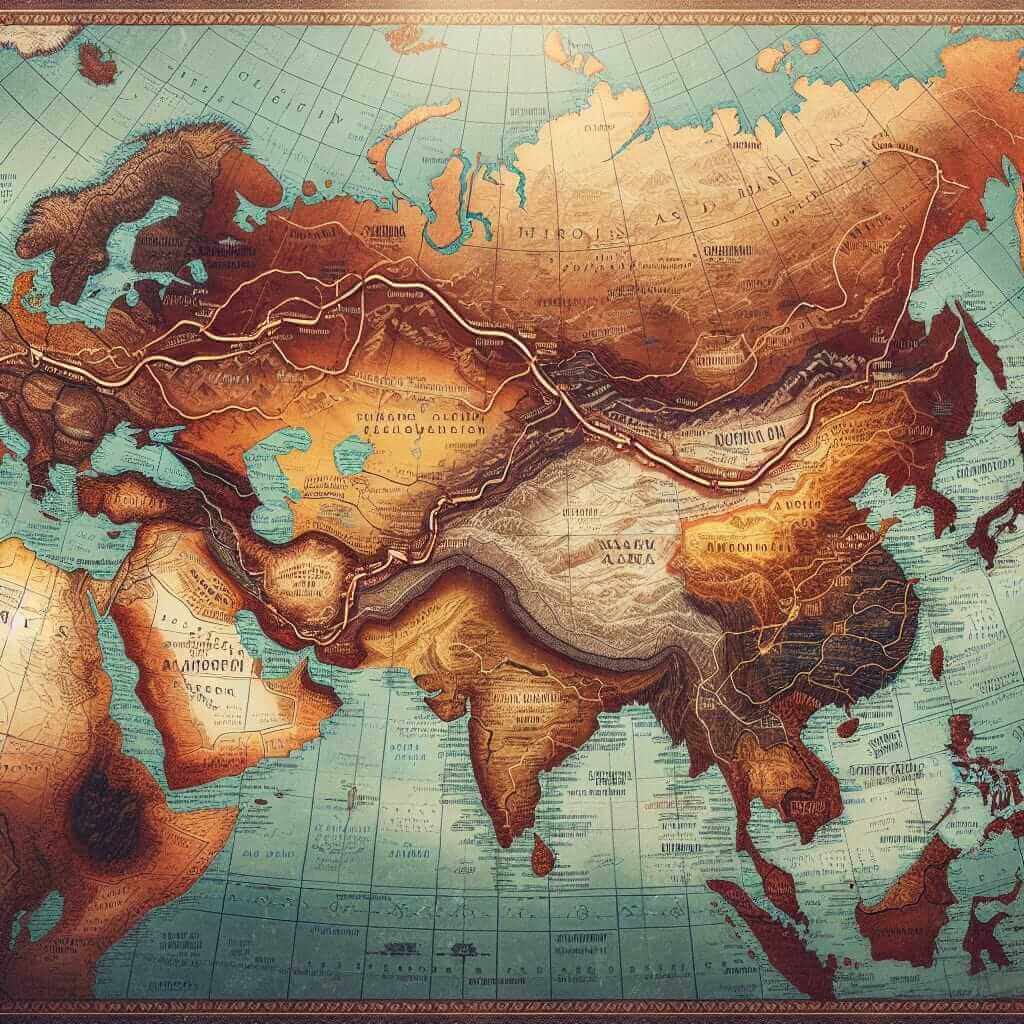The IELTS Reading section can be quite challenging due to its wide-ranging topics and the need to quickly comprehend and analyze the provided text. One popular topic that has frequented the IELTS Reading section is the “Historical significance of ancient trade networks.” Understanding the historical background and implications of these trade routes can offer a wealth of material for reading passages and questions. Given past trends, it’s likely that similar topics may reappear in future IELTS exams. This article aims to provide a comprehensive guide to mastering this topic, offering a detailed reading passage, followed by various types of questions and answers, all designed for IELTS practice.
IELTS Reading Practice Test: Historical Significance of Ancient Trade Networks
Reading Passage
Ancient trade networks were the highways of the historical world, connecting civilizations through the exchange of goods, ideas, and culture. These networks, such as the Silk Road and the Trans-Saharan routes, played a crucial role in the development of human civilization.
One of the most famous trade routes, the Silk Road, connected East Asia to the Mediterranean, spanning approximately 4,000 miles. This network of trade routes enabled the movement of goods like silk, spices, and precious metals. More importantly, it facilitated the exchange of ideas, religions, and technologies, significantly shaping the cultures of the connected empires.

Similarly, the Trans-Saharan trade networks linked sub-Saharan Africa to North Africa and Eurasia. Caravans transported gold, salt, and other commodities across the harsh desert landscape. This trade not only enriched the economies of the involved regions but also contributed to the spread of Islam and other cultural interactions.
The significance of these ancient trade networks extends beyond economic gains. They served as conduits for intellectual and technological advancements. For instance, papermaking and printing techniques spread from China to the Islamic world and eventually to Europe, revolutionizing information dissemination.
Moreover, these trade routes prompted the rise and fall of powerful states and empires. The wealth generated by trade enabled rulers to build strong armies and monumental architecture. However, dependency on trade also made them vulnerable to external disruptions, leading to decline when these trade networks were interrupted.
In essence, ancient trade networks were the lifelines of historical civilizations. They fostered economic prosperity, cultural exchange, and political power, leaving an indelible mark on human history.
Questions
Multiple Choice
-
What was one of the primary functions of the Silk Road?
- A. To connect Europe with America
- B. To facilitate the trade of silk and spices
- C. To promote the spread of Christianity
- D. To transfer gold from Africa to Asia
-
Which statement about Trans-Saharan trade is NOT true?
- A. It involved the exchange of commodities like gold and salt.
- B. It connected sub-Saharan Africa with North Africa.
- C. It had no impact on the spread of religions.
- D. It enriched the economies of the involved regions.
True/False/Not Given
- Papermaking and printing techniques initially spread from Europe to China.
- The Trans-Saharan trade networks led to the spread of Islam.
- Ancient trade networks only affected the economic aspects of civilizations.
Matching Headings
- Match the following headings with the correct paragraphs:
- i. The Economic Impact of Trade Routes
- ii. Cultural Exchanges via Ancient Trade Networks
- iii. The Rise and Fall of Empires
- iv. Technological Innovations Spread via Trade
Answers
Multiple Choice
- B. To facilitate the trade of silk and spices
- C. It had no impact on the spread of religions.
True/False/Not Given
- False. (Papermaking and printing techniques spread from China to Europe.)
- True.
- False. (Ancient trade networks also influenced cultural and political aspects of civilizations.)
Matching Headings
-
- i – Paragraph 2
- ii – Paragraph 3
- iii – Paragraph 5
- iv – Paragraph 4
Common Mistakes
When answering matching headings questions, students often misinterpret the paragraph’s main idea. Always focus on the theme of each paragraph rather than getting distracted by details.
Vocabulary
Here are some complex words from the reading passage:
- Conduit
- Part of Speech: Noun
- Pronunciation: /ˈkɒn.dju.ˌɪt/
- Meaning: A means by which something is transmitted.
- Commodity
- Part of Speech: Noun
- Pronunciation: /kəˈmɒd.ɪ.ti/
- Meaning: A raw material or primary agricultural product that can be bought and sold.
Grammar Focus
Pay attention to noun phrases, which often feature prominently in IELTS Reading passages. For instance:
- The wealth generated by trade (Noun phrase)
- Structure: [Determiner + Noun + Past Participle + Prepositional Phrase]
- Example: The new policies led to a sharp increase in the revenue collected by the government.
Tips for a High IELTS Reading Score
- Skimming and Scanning: Develop these skills to locate key information quickly.
- Time Management: Allocate your time wisely to ensure you answer all questions.
- Practice Regularly: Consistent practice using sample tests will help improve your speed and accuracy.
By incorporating these strategies and understanding the profound impact of ancient trade networks, you can enhance your comprehension and analysis skills, paving the way for a higher IELTS Reading score.